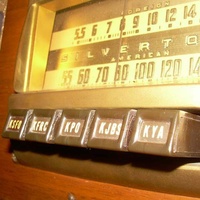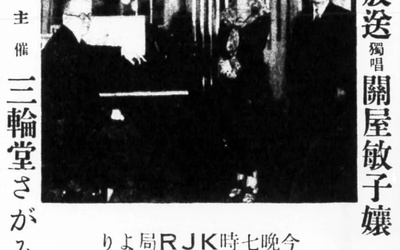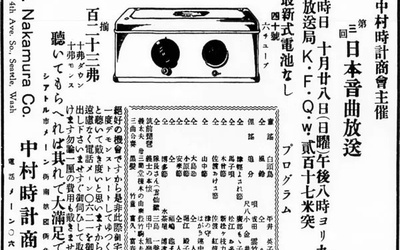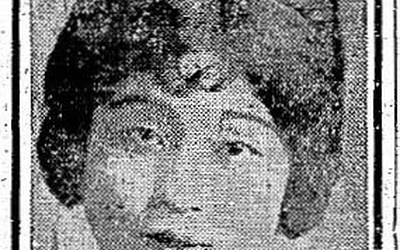Japanese Time ~History of Japanese Radio Broadcasting~ {Seattle Edition}

Radio broadcasting began in the Seattle area in 1921. During this time, Japanese radio programs, including Japanese language programs and Japanese music programs, also began to be broadcast. The first Japanese radio programs in North America to be regularly broadcast were in Oakland, California in 1927. The following year, in 1928, they began in Seattle, followed by San Francisco, Los Angeles, Sacramento, Vancouver, San Jose, El Centro, Visalia, and Watsonville.
According to the 1930 U.S. census, the Japanese population at that time was 17,087 in the entire state of Washington and 8,134 in Seattle. Although advertising has limited effectiveness, several sponsored programs were produced aimed at Japanese compatriots. This four-part series will introduce some of these programs.
*This series is an excerpt from Tetsuya Hirahara's book "Japan Hour" and is reprinted from the North American Newspaper .
* * * * *
Series: "Japan Time: History of Japanese Radio Broadcasting"
Stories from this series
Episode 4 (final episode) A radio program by Nisei and its end
Oct. 3, 2022 • Tetsuya Hirahara
Read Part 3 >> Japanese American Courier Broadcasting The Japanese American Courier (hereafter referred to as the Courier) was an English-language weekly newspaper (President: James Sakamoto) that was launched in Seattle in January 1928 and targeted at second-generation Japanese, and was published every Saturday. It initially only covered the Seattle area, but later expanded its reach to the West Coast. A radio program sponsored by this English-language newspaper began on KXA in February 1934 (it was renamed KOL and KJR …
Part 3: Japanese businesses rush into radio broadcasting
Sept. 26, 2022 • Tetsuya Hirahara
Read Part 2 >> Miwado As of January 1931, KFQW aired Nakamura Watch Shop's "Japanese Music Broadcast" (2nd period) every other Thursday, but on weeks when this program was not aired, Japanese music also began to be broadcast at the same time (7:30-8:00 pm). The program was sponsored by Miwado, a retailer of books, magazines, stationery, photographic equipment, and more. This meant that Japanese music could be enjoyed on the radio every Thursday. The program is thought to have already …
The 2nd Popular Japanese Music Program
Sept. 19, 2022 • Tetsuya Hirahara
Read Part 1>> Nakamura Watch Shop's Japanese Music Broadcast While there were almost no regular Japanese radio programs in North America in the 1920s, "Japanese Music Broadcasting" began on Seattle's KFQW station on August 24, 1928. The Nakamura Watch Company, run by Nakamura Masakichi, a native of Fukui Prefecture, was the sponsor. In addition to clocks, the store also sold radios and gramophones, and came up with the innovative idea of lending out radios free of charge for listening. The …
Part 1: The Prehistory of Japanese Broadcasting
Sept. 12, 2022 • Tetsuya Hirahara
The activities of Japanese musicians Before the Japanese language programs began, there were Japanese musicians who were active on American radio broadcasts. As early as March 1922, a Hawaiian newspaper reported that soprano singer Tamaki Miura, who was performing in Seattle as a member of the San Carlo Opera Company, had made a radio appearance. There are no reports in the local Seattle newspapers, so the veracity of this story is unknown. What is certain is that Miyoshi Natori, a …






